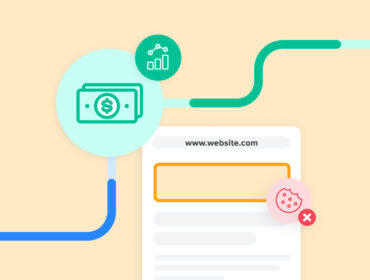Tips for overcoming the challenges of developing a first-party data strategy
First-party strategies should be top-of-mind for publishers and brands right now. They’re the key to surviving the death of the third-party cookie and securing direct relationships with consumers across the web.
There’s just one problem: Those strategies can be pretty tough to build.
We turned to Jay Glogovsky, senior director of revenue analytics and operations at The New York Times, for tips on breaking down the top challenges of this process. And he should know – The Times is leading the charge by officially phasing out third-party ad data and introducing its proprietary first-party data platform.
Here’s a peek at the biggest hurdles Glogovsky pinpointed in our recent Real Time Banter webinar.

The challenge of creating scale
Scale was Glogovsky’s biggest concern going into the first-party data launch.
“The ability to create scale and sell audiences around first-party data is a proven model, but it’s only proven at the platform level,” he said. “Facebook and Google are doing this, and they are taking everyone’s share.”
On the publisher side, however, Glogovsky expects audiences to be more fragmented, at least in the short-term.
“Because of that, I do think we’ll have challenges around speaking the same language and trying to differentiate ourselves – from those platforms and also from each other.”

Using third-party ad-buying platforms
A common publisher question is: “How will third-party, non-direct ad-buying platforms, like real-time bidding services and Google, be handled in this first-party data renaissance?”
The answer isn’t exactly simple, at least for The Times.
“Programmatic at The New York Times is still incredibly important and valuable,” Glogovsky said. “It is, as every publisher knows, an almost 100%-profit advertising stream.”
That’s why they’ll take a phased approach over a series of quarters.
“Because programmatic is so nuanced, buyers are going to still have the capability of using third-party programmatically,” Glogovsky said. “However, it’s our responsibility to differentiate our supply to make sure it’s still the optimal channel.”
Glogovsky points to transparency as The Times‘ biggest differentiator right now, since they use three layers of data validation and offer to show their methodology and modeling to advertisers.

The costs of data modeling
Publishers can use data modeling to create segments of target audiences and sell advertisers on their capabilities. The Times, for example, built a model for emotional targeting (reaching readers based on how they’ll feel while consuming content) with 150,000 unique inputs.
“We believe that models will only get better with more rigor and more inputs, so we have an always-on solution and we’re constantly getting survey results,” Glogovsky said. “We’re talking about tens of thousands every quarter just to continue to refine and improve our models.”
But these models often require advanced software and talent to build and sustain.
“It’s expensive to develop and have a team to do this,” Glogovsky said. “I understand not all publishers can do that overnight, but I do think the publishers that can have the responsibility of doing it for the entire industry, so we all move forward.”
Reach out to [email protected] today to learn more about how LiveIntent can help with developing your first party data strategy.


